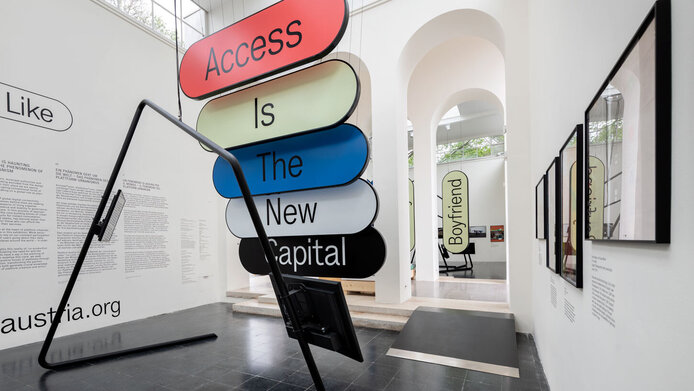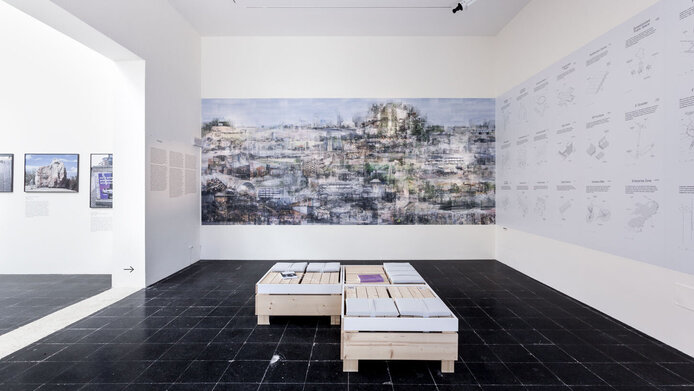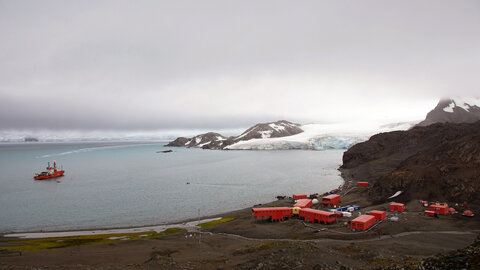How data is changing our cities

They know what we buy, who we meet and where we go. Airbnb, Amazon, DriveNow, Google Maps, Lieferando, Lime and Uber are just some of the platforms and services that collect data on mobility and purchasing behaviour. By mining this treasure-trove of data, technology corporations are redesigning urban spaces for the optimal use of their services – a phenomenon that can be described as platform urbanism. “Technology companies have vast knowledge about urban mobility. Alongside city administrations, they use this know-how to create new traffic systems, for instance,” explains Peter Mörtenböck, art and architecture theorist. He knows that it is the architectural design departments of Alphabet and Amazon that shape the data-supported urban neighbourhoods of tomorrow.
Peter Mörtenböck and his team are interested in the mutual impact and interaction between data, the public sphere and urban spaces. With funding from the Austrian Science Fund FWF, the researchers spent five years conducting art-based basic research, hosting conferences, developing exhibitions, publishing two books and establishing collaboration projects. During this period, more than 100 people were involved in their research.
International art-based research
The research process was international in scope. In London, the team gathered knowledge about video surveillance. A trip to Tallinn provided insights into e-governance, and a trip to Mumbai enlightened them about environments where tech corporations have had only a rudimentary impact. The core team paid several visits to Silicon Valley, where the researchers met with architects and staff of Apple, Meta and Alphabet. “We particularly explored the campus architecture and the plans to expand it through new residential areas. Those are prototypes for future housing developments,” says Mörtenböck. The significance of patents also became appreciable. “The Steve Jobs Theatre at the Apple campus and the design of the Amazon department stores are just a few examples of patent-protected designs,” he explains.
Art-based research approaches, taking the form of drawings and animations, for instance, helped the researchers to challenge their own assumptions on topics such as data publicity. But there are more benefits of such creative approaches. “It was a big concern of ours to publicise how each and every individual is involved in data production. When you know how subtle, creeping change in our environment occurs, you develop a notion of what data is collected and what it can do. Art-based research helps us interface with the public”, says Mörtenböck. The project team members Lovro Koncar-Gamulin and Christian Frieß developed video installations and animations to translate the research process into visual information. In Carinthia, Styria and Vorarlberg, they held discussions with interested parties. At conferences in Vienna, London and Los Angeles, they discussed the issues with international researchers and experts.
Centre stage in Venice
The general public became aware of the project in the context of the Venice Architecture Biennale. Peter Mörtenböck and the architect and cultural theorist Helge Mooshammer were commissioned as curators of the Austrian pavilion from May to November 2021. Under the title “We Like. Platform Austria”, they put their inquiries on data, the public sphere and urban space in the limelight. The roughly 300,000 visitors were greeted by huge signs emblazoned with slogans like “Access Is The New Capital” to illustrate how Netflix or Amazon Prime control and monetise access to content with paid subscriptions. The slogan “The Platform Is My Boyfriend” epitomised the emotional attachment people develop for platforms. Some of the visitors used the signs as a backdrop for Instagram photos.
Videos, animations, a collage showing photos of environments modified by sensors, and patented drawings of co-working spaces and inner-city distribution centres served to encourage the visitors to actively explore the changes in urban environments. The exhibition was flanked by live discussions with renowned architecture bloggers on topics ranging from e-commerce to the gig economy. One focal aspect was to engage with visitors, for instance by allowing them to upload photos of their ideal visions of the city of the future to a database. These visions are now being incorporated into a follow-up project on platform urbanism, also funded by the FWF, on which Peter Mörtenböck and his team have been working since March 2022. In May 2023, the exhibition “We Like. Platform Austria” exhibition will be on display at the Piazza Maggiore in Bologna's historic city centre.
Personal details
Peter Mörtenböck studied psychology, architecture and urban and environmental research in Vienna and Graz and qualified as a professor of cultural history. He is Professor of Visual Culture at the Faculty of Architecture and Spatial Planning at TU Wien and a Research Fellow at Goldsmiths College, University of London. Together with Helge Mooshammer, he founded the Centre for Global Architecture, an interdisciplinary research platform. His research delves into new data publics, the global use of raw materials and urban speculation. For the two art-based research projects “Data Signs in Public” (2016–2021) and “platFORMed city” (2022–2026), Mörtenböck received roughly EUR 743,000 in funding from the Austrian Science Fund FWF.
Publications
Peter Mörtenböck, Helge Mooshammer (Hg.): Platform Urbanism and Its Discontents, nai010 publishers 2021
Peter Mörtenböck, Helge Mooshammer: We like – Austria’s Contribution to the 17th International Architecture Exhibition – La Biennale di Venezia 2021
Peter Mörtenböck, Helge Mooshammer (Hg.): Data Publics – Public Plurality in an Era of Data Determinacy, Routledge 2020







